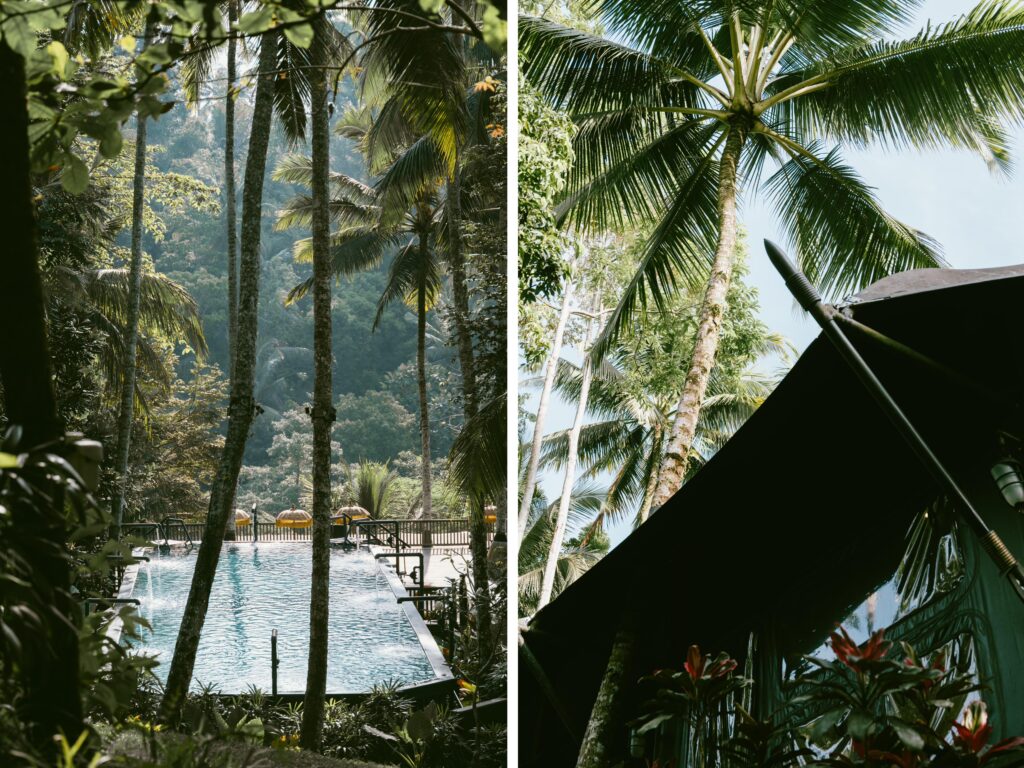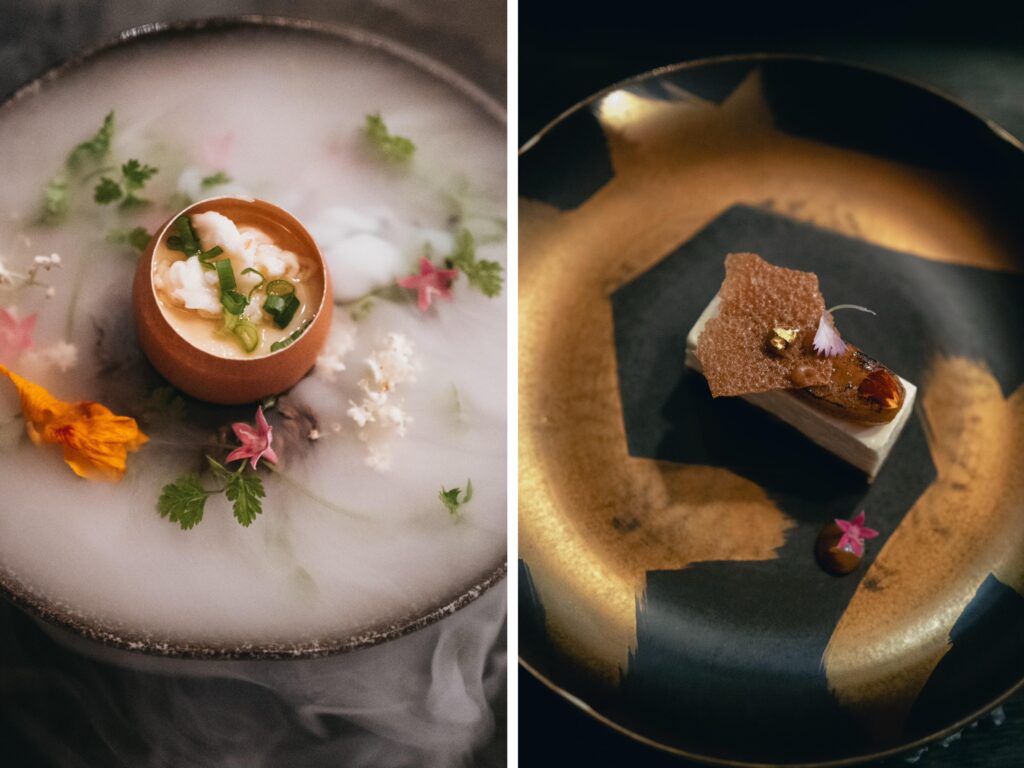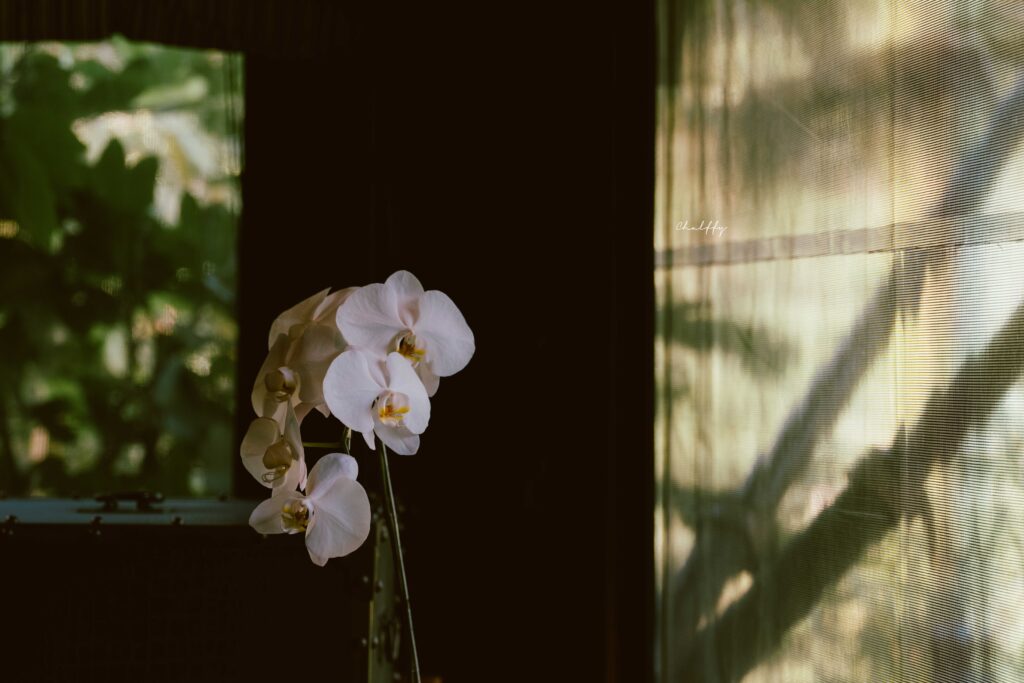“Where do you come from, sir?”
During my days in Bali, this was almost always the first question I heard from the locals, regardless of the occasion. Most often, it served as a polite greeting, delivered with the signature gentle smile of the Balinese. Yet, at times, in the shy glimmer of their eyes or the probing nature of their follow-up questions, I sensed a deeper undercurrent—a curiosity that seemed to arise from something more primal.
Among Indonesia’s more than ten thousand islands, scattered like pearls across the Indian Ocean, the locals are not particularly known for exploring foreign lands in the modern age. As Elizabeth Pisani noted, the Indonesian archipelago is vast enough, with each island possessing its own culture, language, traditions, and customs. For Indonesians, a simple ferry ride across the sea can swiftly transport them to a world starkly different from their own. Just three centuries ago, the intricate network of straits and waterways between these islands had served as golden passages for trade between China and the Arab world, transforming the archipelago into the fabled realm of spices that captivated Western explorers. Thus, when I arrived in Bali, filled with romantic notions of the Age of Exploration and a time rich with traditional ceremonies, I found it difficult to reconcile this land—so rooted in the “small home” and the “deity” in daily life—with the grand and cosmopolitan chapters it once wrote in the history of global trade.
I knew, however, that if I wished to seek out this spirit of exploration, I needed only to turn my back on the ocean and walk into the jungle. On the horizon, like the prow of a great ship, stood the Capella Ubud.
A great ship that sailed FROM the forest
If an expedition’s ship were to run aground, what would you do?
Would you linger by the shore, searching for a way back to the known world through the ocean, or would you venture into the dense jungle, carving out a new life amid the unknown? There is no doubt that Bill Bensley, the designer of Capella Ubud, would have chosen the latter.

As the rainy season began in Bali, the air turned cool and gentle. The car glided into a realm of verdant green, where, with a careful glance, I could catch glimpses of gray-brown canvas roofs peeking through the treetops. The swaying trees danced like waves, and the intermittent flashes of canvas resembled ships adrift upon a vast sea. Almost instantly upon entering Capella Ubud, the clamor and busyness of Bali were swallowed by the “waves” before me, leaving only the soft whisper of the breeze, the songs of birds, the distant chimes from a temple at the mountain’s foot, and the peculiar fragrances of forest flowers.
With a welcoming drink in hand, the slumbering world of memory slowly stirred awake.
Since my youth, I had harbored endless romantic fantasies about the Age of Exploration and the Maritime Silk Road, so much so that my second book had paid homage to the travelers who crossed the desert sands. These voyagers, moving between East and West, braved solitude and danger, wonder and awe, allowing humanity to glimpse distant lives and to recognize the significance of connection through seemingly trivial objects. The adventurous spirit of the Age of Exploration seemed a fitting theme for a hotel—for what is a hotel if not a town, with its guests akin to sailors upon the sea? In this town, I could see artifacts from my homeland, but what struck me more were the lives steeped in an exotic charm. I could hear unfamiliar languages and imagine the meanings and emotions carried in those sounds and gestures.
Moreover, placing such a hotel in Bali bestowed Capella Ubud with an additional layer of significance. Bali, far removed from the main trade routes during the Age of Exploration, remained a hidden corner of the world, where the themes of exploration and peace intertwined in a quiet balance.





The tent I stayed was named “The Painter,” a tribute to the artists who accompanied maritime expeditions. Since the 16th century, as fleets and merchant ships arrived on the shores of Indonesia, painters and cartographers, captivated by the exotic allure around them, produced classic works such as The Fleet of Cornelis and The Market of Batavia. In that era of exploration and discovery, these realistic depictions served as windows into distant lands, offering later travelers detailed visual guidance for their journeys.


Indonesia’s history wove together the intense and intricate threads of foreign colonial trade and local sentiment. In Bali, confronted by the diverse cultures brought by the ocean, the locals demonstrated a remarkable commitment to safeguarding their indigenous heritage. Whether through the preservation of the only surviving Hindu community in the Indonesian archipelago or their warm hospitality toward outsiders, the island balanced Indonesia’s most modern economic activities with deeply rooted traditional customs. One name stood out: Mads Lange, the inspiration for the restaurant’s name. Danish by birth, Mads played the role of peaceful intermediary between Bali and the Netherlands during his years in Indonesia. He established trading posts and fostered prosperous commerce between the East Indies and Europe. His peace negotiations during the Dutch colonial era allowed Bali to retain a relatively independent identity, thus protecting its cultural heritage to the greatest extent possible. In an age of frenetic colonial expansion fueled by maritime exploration, Mads’s presence proved that even in the most turbulent times of distant longing, understanding and respecting local cultures, while nurturing communication between peoples, remained invaluable resources.
Naming the restaurant after him carried profound significance: true comprehension of the world does not lie in possession, but in the endeavor to understand and accept differences across cultures.







Wandering alone for long stretches in the sun-dappled rainforest, I often found myself adrift, momentarily forgetting where I was or what I was doing. Deep within a grove of coconut trees, I strained to make out the massive silhouette of the restaurant, which resembled a great ship, seemingly anchored on the ocean’s shore. The jungle flickered with bursts of fiery red—clusters of hibiscus, symbols of courage and strength—interspersed with the creamy petals of frangipani. I followed the moss-covered stone steps down into the valley, where a small stream sparkled in the sunlight, meandering towards shadowy depths.
Looking up, I watched the foliage swaying gently in the breeze, producing a faint rustling sound as sunlight fractured into dappled patterns. In the distance, I vaguely heard the sound of waves, only to realize it was the guests’ hands gliding through the pool, sending ripples across the water’s surface. And thus, time flowed on. After a radiant day, evening approached, and the setting sun gleamed with a golden brilliance. Lying on the tent’s terrace, I felt the gentle breeze caress my skin. Shadows danced upon the curtains, clouds drifted lazily by, and the fragrant scent of orchids wafted through the air.


In 1848, the Dutch noble Walter visited Mads Lange in Bali, and extensively described Mads’s trading post. He spoke at length of Mads’s reception area: a traditional Balinese pandopo style, complete with a dedicated dining room and billiard room, where local Balinese gathered daily to discuss trade, surrounded by the art Mads had collected.
As a hallmark of Capella Hotels’ public spaces, the Living Room was not exclusive to Capella Ubud. However, imbued with the social function attributed to such rooms, the Living Room at Capella Ubud seamlessly echoed the hotel’s overarching theme from the outset. Here, cuisine, beverages, billiards, books, conversation, and artwork coexisted harmoniously, aligning with Mads’s vision of an early explorer’s salon—a recreation of the cross-cultural exchange that had characterized his era.

In 1292, after spending seventeen years in China, Marco Polo departed from Quanzhou(Also known as Zayton) with his father and uncle, escorting the Mongolian noblewoman, Kököchin, to Persia before ultimately returning to his hometown of Venice. Although he never set foot on Balinese land, the fleet of six hundred he commanded once lingered for five months on the island of Sumatra, waiting for the monsoon winds to rise—a fact likely marking the first mention of monsoons by a European writer since ancient Greece. In his accounts, Marco Polo detailed the bustling ports and trade of Sumatra, calling it home to the world’s finest fish and exceptional wine.
Of the six hundred who embarked on that maritime expedition, only eighteen survived to reach Venice. Marco Polo, in his book, did not dwell on the trials they faced at sea, but his successors in European exploration surely understood the laborious realities behind such a romanticized journey. His travels closely followed the ancient Silk Road’s maritime and terrestrial paths, leaving behind a wealth of vivid and verifiable records of local customs. But perhaps more striking than these details was his enduring sense of wonder. In his writings, Marco Polo conveyed a world where “everything is different,” maintaining an extraordinary sensitivity to humanity, languages, flora and fauna, and cultural diversity. He illuminated those early encounters between East and West with a rare enthusiasm, a light guiding the spirit of exploration.
While Marco Polo never mentioned venturing into the tropical rainforests of Sumatra, standing here at Capella Ubud, surrounded by objects that might once have been laden on his ships, I found myself imagining him. Could he have sat in a rainforest like this, sipping tea, pen in hand, poring over Eastern texts? These ancient artifacts from the East, scattered through the hotel, seemed transformed into a kind of romance within the fabric of time—silent witnesses to humanity’s boldness in reaching across mountains and seas, in search of communion.

Each evening, before heading to the Officer’s Tent for afternoon tea, I found solace in gazing upward as the moon ascended through the treetop. The moon, rising from the eastern hills, had been the first glimmer of hope for sailors lost at sea—the faint beacon that promised the presence of Bali. Perhaps it was the altitude that lent the moonlight such clarity. In the deepening stillness, every sound seemed solemn. When those early explorers stood on these shores, looking up at the same bright moon, what thoughts filled their minds? Did they feel the pull of home, or the thrill of standing on the other side of the world? I could not say. Yet, I knew this moon had been a guiding light for mariners, marking Bali as the gateway to something greater—the connection between worlds.
Whether they were returning home or embarking on distant journeys, what they built here in the jungle was more than a settlement—it was a dream. A dream of humanity’s unceasing quest for knowledge and adventure in the unknown.
Mountains and Deities at the Threshold of Home
For the Balinese, stepping outside one’s door meant entering a landscape that intertwined seamlessly with their spiritual world—a realm of temples and rice fields stretching to the horizon. Beyond the paddies, between home and the sea, loomed the imposing figure of the volcano—a sight impossible to ignore.
The Balinese with whom I spoke held a complex, almost reverent relationship with the active volcanoes that stood at their doorstep. The volcanic ash nourished their fields, yet the very land that sustained them also harbored the threat of catastrophe. During my stay at Capella Ubud, I embarked on a sunrise excursion to the volcano, seeking to understand the deep connection these colossal forces had forged in the lives of the Balinese.


At five in the morning, I set off beneath a sky studded with stars. Not long after leaving the hotel, I noticed the locals already stirring in the pre-dawn darkness. The houses along the route remained veiled in shadow, illuminated only briefly by the flickering headlights of our car, revealing the fleeting faces of early risers. Motorcycles zipped past, their engines a distant hum, mingling with the tremor of our vehicle on the unpaved roads. Moving through the darkness felt like sailing on an endless sea, where tranquility stirred a subtle sense of anticipation.
Our guide told me to look to the right. Through a gap in the thickets, a blood-red glow sliced through the blackness. I caught a faint glimpse of the immense mountains beginning to emerge from the night, their silhouettes barely discernible against the horizon. This was my destination—Mount Batur, the resting giant waiting to greet the dawn.

Across the Indonesian archipelago, one hundred and twenty-seven active volcanoes stretch from Sumatra to Java and Bali. For the young Balinese, volcanic eruptions are not mere legends but lived realities, woven into their collective memory. The most recent eruption of Mount Batur occurred at the turn of the century, and when I spoke with local youngsters, they humorously referred to it as the gods’ fireworks—far more vibrant than any celebration the world could offer. Yet, beneath their laughter, the scars of disaster remain. Ancient temples lost to time, villages buried in ash, and the elderly who cling stubbornly to the remnants of their homes. Though the mountain now stands silent, it seemed to me that the air still carried echoes of the earth’s roar, of ancient screams swallowed by time.
Having experienced an earthquake in Athens, I recalled the unsettling tremor beneath my feet. Though its magnitude paled in comparison to the eruptions Mount Batur had unleashed upon the Balinese, it was enough to wreak havoc in the city, erasing my serene impressions of Athens. What lingers in my memory are the shrieks of startled passersby, their panic, and the eerie, prolonged silence that descended afterward, holding the city in a fearful grip.
Yet, life continues. In the regions blanketed by layers of volcanic ash, rice, vegetables, and fruits flourish abundantly. The villages, bathed in calm, persist in their way of life, and the Balinese remain steadfast in their belief in fate—a conviction that the future lies in the hands of the divine, leaving little room for fear or dread.

When we reached a flat expanse, the hotel’s guide set up the equipment for my sunrise coffee. This secluded spot, seemingly reserved for guests of Capella Ubud, offered the perfect vantage point to behold the majesty of Mount Batur and its serene volcanic lake.


Dawn unveiled a spectacle of vibrant hues, casting the majestic volcano and the terraced rice fields below in a breathtaking tableau. A delicate mist lazily draped itself over the mountain’s face, while the lush, wooded slopes transformed into a symphony of soft pinks and translucent greens, imbuing the landscape with a sense of quiet mystery. Birds soared overhead, and tendrils of smoke curled upwards from the villages nestled in the valley. In the tranquil silence, the distant chime of temple bells behind me lent a serene melody to the stillness.


As the vehicle made its way across the ash-laden terrain, we entered a darkness that veiled the earth—yet life quietly stirred beneath. In the Balinese worldview, a delicate equilibrium must be sought between humanity, nature, and the gods. The looming presence of Mount Batur, the daily toil of the people, and the spirits that inhabit the temples coalesced into a serene morning vista, a scene that radiated an astonishing sense of peace.
At that moment, the Balinese were celebrating the traditional Nyatur festival, dressed in their finest garments as they journeyed to the temples, both by day and by night, to offer prayers for forgiveness, harmony, and balance. Nyatur, deeply rooted in Bali’s philosophy of Tri Hita Karana, calls for villages and families to participate in rituals, seeking absolution for conflicts and apologizing for any harm caused to the environment. It is a philosophy that reflects their pursuit of interconnectedness, reciprocity, and the balance that shapes their everyday lives.

In Bali, the temple serves as the heart of faith. Particularly in Ubud, temples line nearly every path. From small stone shrines, no larger than a handful of tiles, to grand centuries-old sanctuaries shimmering in the light, each Balinese family maintains its own temple, with a place of worship no more than ten paces from their home.
Nestled in the valley of Capella Ubud, a century-old temple continues to anchor the spiritual life of the local villagers. They ascend the steps—carefully laid by the hotel itself—to carry out their daily rituals. During my stay, I would often hear the rustle of leaves and the calls of rainforest birds, mingling with the distant sounds of celebration drifting from the temple. The lives of the guests and the villagers, though intertwined by faith, remained distinct, coexisting in a delicate balance of proximity and respect. This sense of harmony—of weaving into the fabric of local culture while preserving a respectful distance—lies at the very core of Capella Ubud’s design ethos.



The offerings, crafted with care from flowers and leaves, were laid out in quiet reverence. A stick of incense was lit, its smoke curling into the air as droplets of water were gently sprinkled toward the sky. Grains of rice, seen as blessings from the heavens, were delicately placed on foreheads—a gesture repeated across generations, each heart carrying within it the presence of a deity.
Rabindranath Tagore, on his travels to Indonesia, once reflected in Letters from Java: “I often found it astonishing how the interests and customs of the Hindus intertwined with the lives of the Javanese. Yet Hinduism in Java did not exist in isolation. The Javanese, while distinct in form, embodied postures imbued with Hindu influence.” Today, in Bali, the last bastion of Hinduism in Indonesia, this reverence and submission to the land and to life have endured, even as countless civilizations have washed over the island.
In the melding of East and West, today’s Balinese exhibit a curious indifference to the tales of distant explorations that once unfolded around them. At this crossroads of past maritime adventures, they immerse themselves in the tranquil rhythms of their peaceful lives. Yet, when faced with a stranger’s visage, an innate curiosity stirs within them. Perhaps it is a vestige of the generous hospitality their ancestors offered to foreign seafarers who once graced these shores. Or perhaps, in their remarkable ability to blend cultures, they harbor an unspoken yearning for adventure. With the weight of history resting upon their shoulders, the Balinese are attuned to the legends that surround their waters, understanding the expectations once placed upon their land, making their present serenity all the more profound.
The golden age of the seas has long faded, and the names and stories of legend now lie tucked away in a storeroom to the theater of world. Yet every morning, as I opened the door of my room at Capella Ubud, I was greeted by the emerald valleys and the fragrance of blossoms, accompanied by the sweet notes of birdsong. The morning light spilled through the doorway, as if someone has unbolted the storeroom of history, liberating those tales from their shadowy confines. They drifted through the jungle, reviving on Capella’s stage the dreams of voyages long past, here in the heart of the rainforest. In this world that seems to recede ever further from those times, Capella Ubud’s endeavor to weave together local cultures and cosmopolitan ideals stands as a beacon, shining across a vast ocean.



